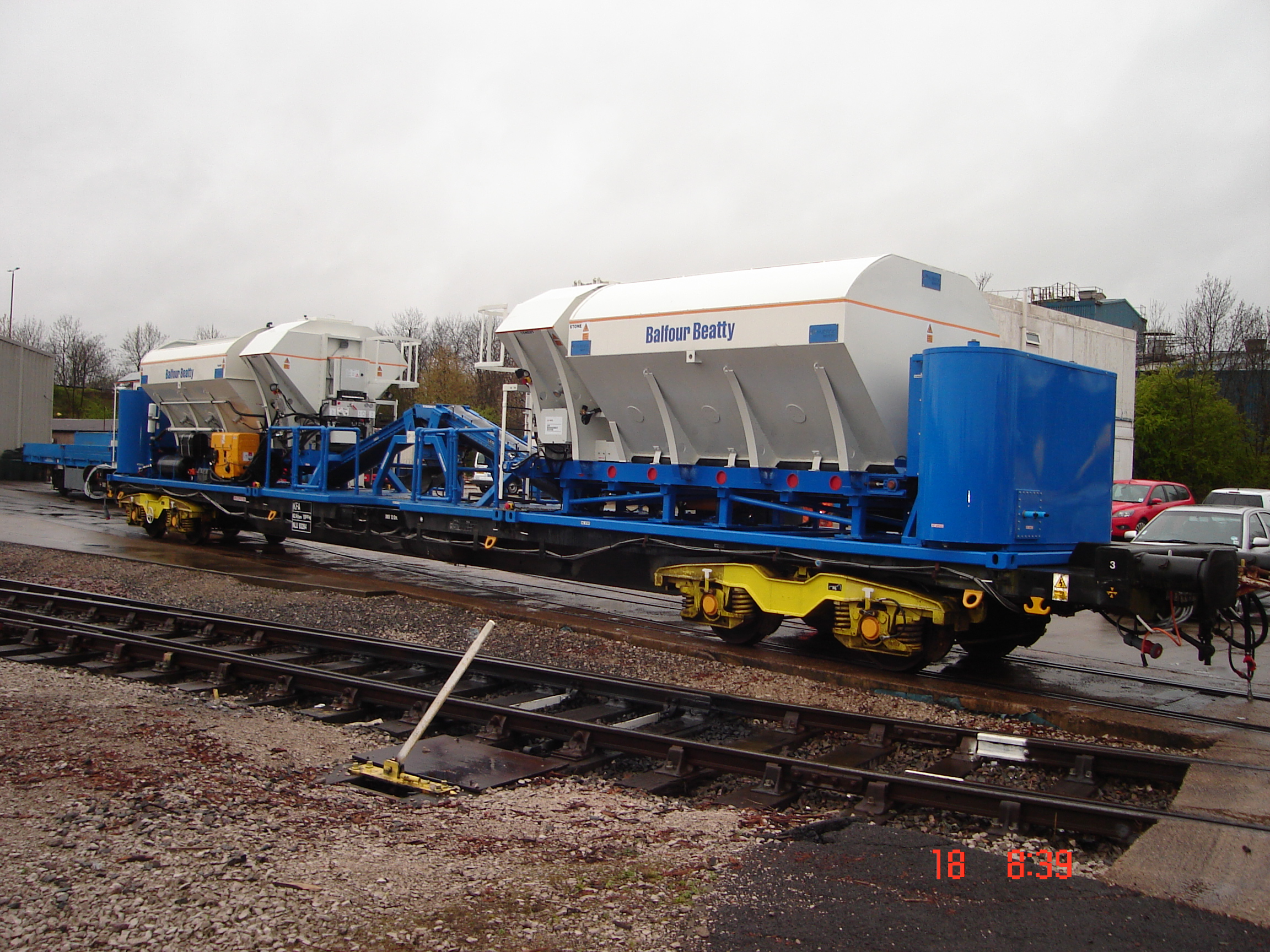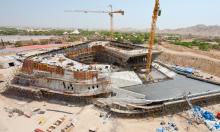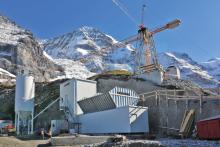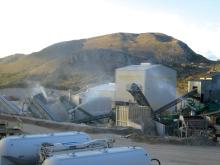
A newly-developed ‘train’ that mixes concrete for rail infrastructure projects is a first in the UK, but it has not been without difficulties
A high output concrete train (HOCT) to support electrification projects and general concrete demand within rail infrastructure in the UK has been developed by
The new unit is based on two Nurock NUVM7 mobile concrete batching plants, the company’s 7m³ truck-mounted unit, ten of which are in service with the British Army in several countries.
The new Nurock rail unit carries all the ingredients, including sand, aggregates, cement and water unmixed in separate compartments. It then proportions these according to the mix design and mixes the quantity required in a continuous mixer, which can be stopped and started as needed via a hand-held remote control: only the required amount of concrete is mixed.
Nurock says that with no waste or loss of quality in transit, the whole process is computer monitored for quality and accountability.
The mixers are said to come into their own in remote locations or where intermittent demand is needed: the rail industry has both these issues to deal with.
“Delivering this project with
The new unit was commissioned by Balfour Beatty Rail following the successful award of Phase 1 of the North West Electrification Project from the cities of Liverpool to Manchester (north-west England). The concept was presented to the customer (
The electrification project is part of a £9.4 billion (€11.9 billion) package of rail infrastructure works for 2014-19 that will see 25kv overhead power delivered to a number of routes.
The Liverpool-based concrete train places concrete 5-6 nights/week and supports a team of 20 involved in the excavating and concreting of formwork located along the side of the rail track. These foundations will support the steel structures for the overhead lines.
The unit can deliver up to 16.5m³ of the desired mix design in minutes and all mixes are monitored by two Nurock Mixer’s computers which can prescribe up to 50 mix designs and monitor all the ingredients of the mix. The mixer units use a patented system, allowing them to batch concrete at cement contents from 50–500kg/m³ “in precise increments while maintaining a constant output per hour.”
The mixers have been mounted on an ISO container base system, two outer bases holding the independent proportioning units and the central base housing the continuous mixers. These deliver the concrete into a central rotating turret onto which removable delivery chutes can be attached. This allows ingredients from either unit to be mixed as required. The rotating turret’s delivery chutes can place concrete on either side of the track as needed.
Considerable redesign of Nurock’s standard NUVM7 unit was required to allow the unit to comply with the rail gauge (tunnel height) requirements but still meet the delivery capacity to make the project a success.
Rail requirements also demanded that the mixer structure was reinforced to meet the stringent safety regulations demanded by the rail industry and involved close working partnerships between Nurock, Balfour Beatty Rail, Network Rail and the rail regulator (ORR).
Balfour Beatty Rail’s engineering and development manager, Geoff Brown, Says: “The adoption of a pair of volumetric mixers onto a railway wagon is a first in the UK and has not been without its difficulties.
“UK rail has one of the tightest structure clearances in Europe resulting in redesign of hopper size and capacity. Approval processes to use new products on the network are laboriously long and in addition operations can only happen once trains have stopped running which means at night and at weekends.
“However, we are pleased to say that together we overcame all of these difficulties and now have a product that not only improves productivity, quality and cost efficiencies but also provides a sustainable solution to traditional methods.”
The traditional method of delivering concrete for UK rail infrastructure has been to deliver ready-mix to an access point and take it up or down track where it is removed and placed by mechanical means.
Nurock says that key to making the project a success was training, and it provided a comprehensive training package to Balfour Beatty Rail to support the transition from concrete procurement to producer.
The package began with training on concrete for all operational staff, followed by practical on-site instruction with a total of more than 20 staff being trained. Further operator and maintainer training have also been provided by Nurock’s Network Rail-accredited staff to Balfour Beatty Rail’s employees.









